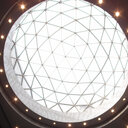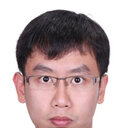Formula optimization of the Jiashitang scar removal ointment and antiinflammatory compounds screening by NF-κB bioactivity-guided dual-luciferase reporter assay system.
Avainsanat
Abstrakti
Inflammation plays a role in scar formation; therefore, decreasing inflammation benefits scar removal. Jiashitang scar removal ointment (JST) is a commercially available traditional Chinese medicinal formulation. It is composed of extracts from Carthamus tinctorius L. (Car), Rheum officinale Baill. (Rhe), Salvia miltiorrhiza Beg. (Sal), and Panax notoginseng (Burk.) F. H. Chen (Pan), which are all herbs with potent antiinflammatory activities. Our aims are to optimize the formula of JST and to elucidate its antiinflammatory active components. Response surface methodology was applied to optimize proportions of the four herb extracts. The antiinflammatory effects were evaluated using in vitro and in vivo models. To screen for active components in this formula, a bioactivity-based ultra-performance liquid chromatography/quadrupole time-of-flight mass spectrometry analysis was performed. After optimization, the antiinflammatory effects of the new formula were significantly superior to the original one. Screening identified 13 active ingredients: a series of saffiomin, emodin, salvianolic acid, tanshinone, and triterpenoid saponin derivatives. These active ingredients were predicted to exert nuclear factor-κB inhibiting effects through MAPK, PI3K/AKT, and NIK-IKK pathways. In conclusion, the original formula was successfully optimized with more potent antiinflammatory activity. These methods can be applied to researches of other formulas.




